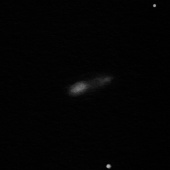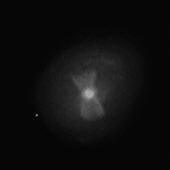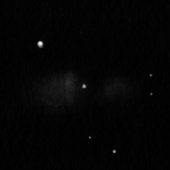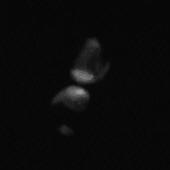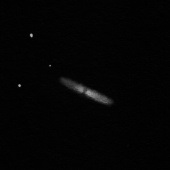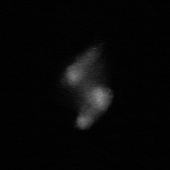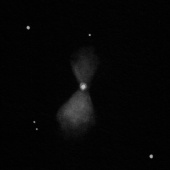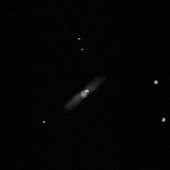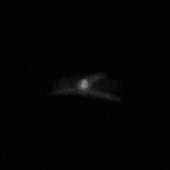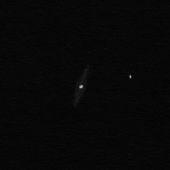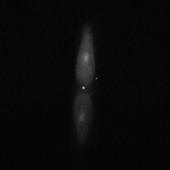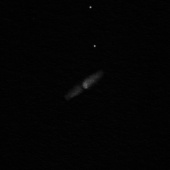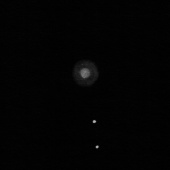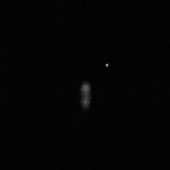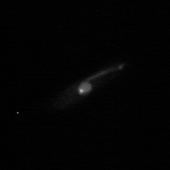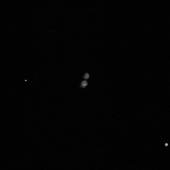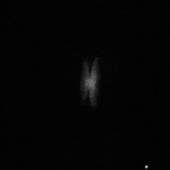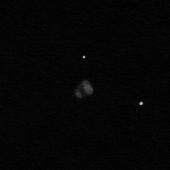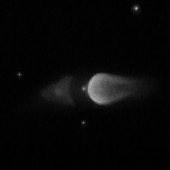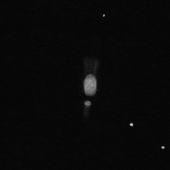CRL 618 "Westbrook Nebula"
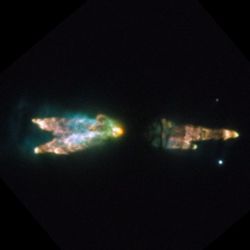
HST
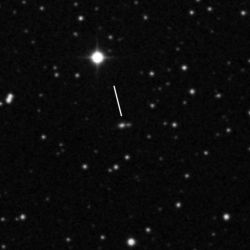
DSS b 5'x5'
27", 837x, fst
6m5+, seeing III
brighter E component steadily visible with averted vision; fainter W
component not visible
27", 586x, fst
7m0+, seeing II
brighter E component direct visible as a very small but 1:2 E-W
elongated plob; fainter component not visible
36", 581x, fst 7m0+, seeing III
direct visible brighter part; brighter E part with center bulge, no folk
structure at the E end; fainter W component repeatedly visible and
separated for seconds each; faint, but 1:2 E-W elongated; smaller than
the brighter E part
HD 44179 "Red Rectangle"
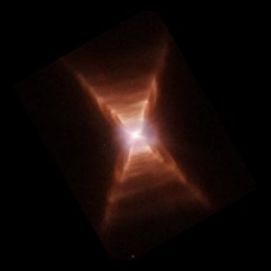
HST
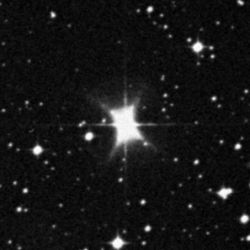
DSS r 5'x5'
with searching eyepiece a bright, direct visible, slightly orange star is visible; star has a slightly larger halo than other similar bright stars; no form or structure visible
16", 257x-600x,
fst 6m5+, seeing IV
bright, orange CS; rectangle structure not visible
27", 733x,
fst 6m5+, seeing IV
9mag bright orange CS star HD 44179 (V777) dominate area and create a
star radiation halo; with small to mid size magnification a 1' long N-S
elongated bar like structure is visible within the halo; with higher
magnification the radiation halo disappears and the structure of the
rectangle starts to be visible more clearly; the former bar now forms a
conical structure starting from the star; the edges of the conical
structure are good defined with the best defined edge at the SW side;
within the structure the nebula seems to be a little bit mottled without
showing clearly structures; no filter reaction
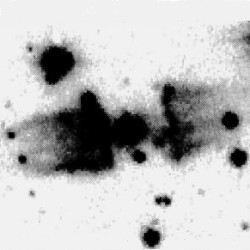
INT
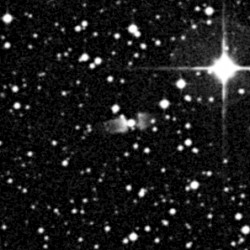
DSS r 5'x5'
27", 293x-419x, fst 7m0+, seeing
III-IV
soft seeing but very good transparency; visibility not a question of
seeing but transparency; CS bright and steadily direct; already with 293x
a very faint glow E of the CS is visible; concentrated observation
brings out a ~0,5' large glow which sits directly E of the CS and seems
to be a little bit brighter towards the star; 419x power seems to be the
sweet spot; at the W side the brightening is much more difficult to
detect; with averted vision a diffuse and very dim glow pops in and out
of view between the CS and a faint DS; glow seems to be somewhat shorter
and is more separated from the CS
OH 231.8+4.2 "Rotten Egg Nebula"
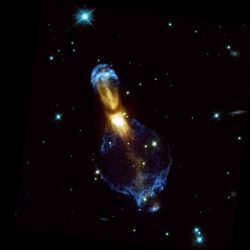
HST
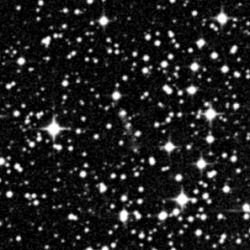
DSS r 5'x5'
stellar spot hard to see with averted vision; not steadily visible; no structure
20", 562x,
fst 7m5+, seeing II
nebula visible as a stellar spot; steadily visible with averted vision;
no UHC filter reaction; no structure
27", 419x, fst 6m5+, seeing
III
23" SSW of a 14mag star (GSC 542201963) a very faint knot is popping in
and out a view; not steadily visible; otherwise absolutely nothing
visible of the knots and elongated object
36", 348x, fst 6m5+, seeing III
the with 27" observed and above mentioned knot is now steadily visible
as a slightly diffuse glow; no other details could be seen
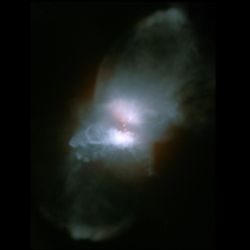
HST
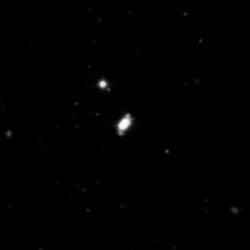
DSS b 5'x5'
direct visible object even in the searching eyepiece; up to 80x stellar appearance; from 229x slightly diffuse; with 400x 3:2 NW-SE elongated; looks like a sharp ended parallelogram; a extremely small dark structure is popping in and out of view in the central area, size and orientation not determinable
20", 402x-575x,
fst 6m5+, seeing III
very small but bright nebula; with high magnification a small separated
structure is visible in the middle; S part seems to be a little bit
brighter; with averted vision faint extensions to the NW and SE are
visible; NW extension a little bit brighter
27", 837x, fst 6m5+, seeing II
small nebula dominated from a bright double structure in the middle;
both halves are separated with a dark bend lane; S half is brighter and
has a stellar peak at the W end, to its E end a short extension to the
SE is visible; contrary from the fainter half a fainter extension is
visible from the W end to the NW; beside the bright and small middle
part two faint far-reaching extensions to the NW and SE are visible;
brighter NW extension is connected to the bright middle part and ends
with a knot; SE part is only visible as a detached knot

HST

DSS b 5'x5'
sits in an small isosceles triangle at the eastern tip; the carbon star is visible as a stellar spot without showing any shell, halo or colour; it is somewhat fainter than the northern star of the triangle and is steadily visible with averted vision
CW Leonis "Peanut Nebula"
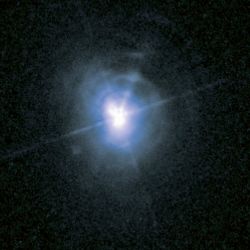
HST
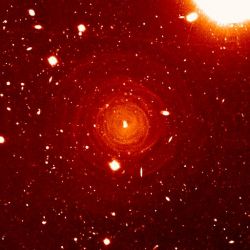
VLT
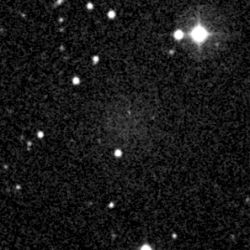
DSS b 5'x5'
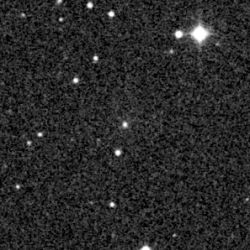
DSS r 5'x5'
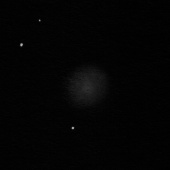
27" sketch
(click to enlarge)
extremely difficult object at the limit of the perception; a very faint diffuse glow is popping in and out of view with 2,4mm EP; not visible with max. EP and 4mm EP; 60/40 positive observation, position of the popping is right; not steadily visible; glow seems to be slightly concentrated and is around 0,5' large; red central star is not visible
Henize 3-401
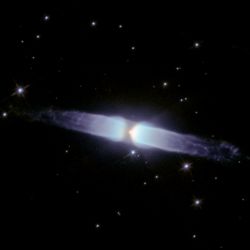
HST
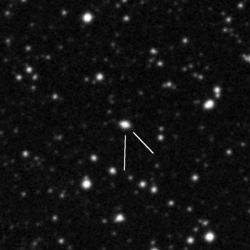
DSS r 5'x5'
direct visible small, thin, 4:1 elongated nebula; separated with a dark lane; around dark lane brighter spots E and W; W spot a little bit brighter; fainter extensions to both sides with similar length; W extension a little bit brighter
Henize 3-404
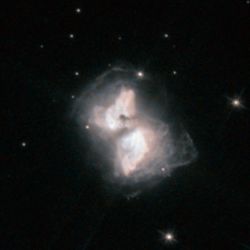
HST
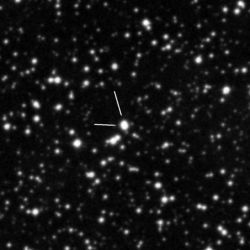
DSS r 5'x5'
object stands out bright and with direct vision already in the searching power; from 400x up the object looks like a tight double; with higher magnification the PPN became much more structured; the overall shape forms a parallelogram with two elongated sections to its N and S end; the S knot is much brighter and can be separated in two more knots, while the NW plop is much brighter; the N area is also elongated but shows only one knot at its SE end; both areas are attached and constricted in the middle
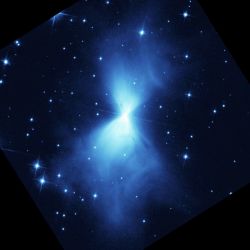
HST
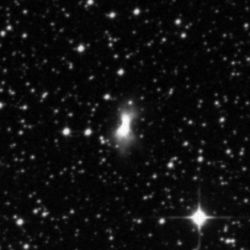
DSS r 5'x5'
bright, direct vision nebula; stellar and bright center; 1:4 elongation with extensions to the S and N; both extensions with no fan structure; S extension a little bit brighter
24", 687x, fst 7m5+, seeing III
bright, somewhat mottled center around stellar spot with fan-shaped
extensions to the S and N; S extension brighter
28", 780x, fst 7m5+, seeing II
bright stellar spot in the center; sometimes double effect like a very
close double star?; S fan brighter and longer; SE side more angled than
SW side; whole N fan with much less conical fan-shape than the S side;
no positive filter reaction
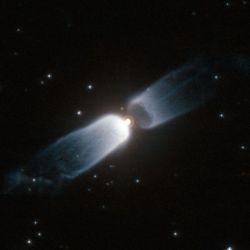
HST
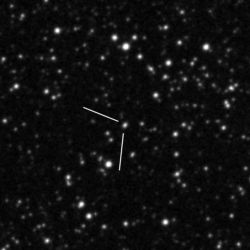
DSS r 5'x5'
direct visible but very small nebula; 3:1-4:1 SE-NW elongation around direct visible CS; dominated from a very bright center with knot or second peak directly SE of the CS; faint, not so long extensions; both extensions seems to be similar bright and long

HST

DSS ir 5'x5'
with UHC unclear popping, without filter not visible or suspected; negative observation

HST

DSS ir 5'x5'
32",
611x, fst 7m5+, seeing II
nothing visible or suspected
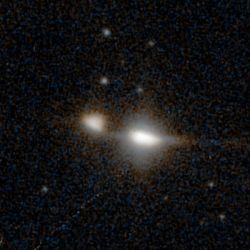
HST
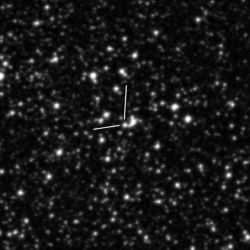
DSS r 5'x5'
brighter knot already visible with 183x and direct vision as a stellar peak; from 1248x knot became fuzzy and ENE-WSW elongated; in moments of very good seeing the second, much fainter knot can be resolved just ENE of the brighter knot; difficult to separate; two co-observer confirms elongation and separation

HST

DSS ir 5'x5'
32",
611x, fst 7m5+, seeing II (30.04.2025)
at the position, two very faint stars are visible with
averted vision; both stars (6" distance) are not steadily visible and
are similar bright; GAIA listed the NE star (label A in the HST image)
as number 5966247617590041728 with given 17,6bmag; the SW neighbour star
is the actual object and is listed with 15,1bmag, which I cannot confirm
at the telescope maybe because of the variation in brightness); the
object shows nor colour or size
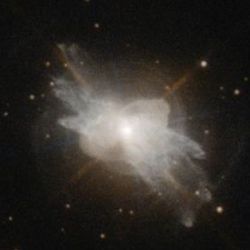
HST
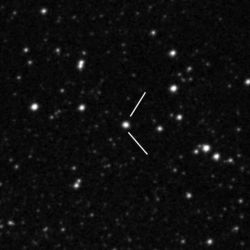
DSS r 5'x5'
direct vision object even with the searching eyepiece; very small and stellar like until 900x; with 1560x the object became clearly 1:2 NE-SW elongated around a stellar spot in the middle; in moments of very good seeing elongated object fans out to its ends; NE end shows only one fan at the S end; the SW side shows two fans in conical shape; all details are at the very limit of perception, co-observer confirms the observed structure
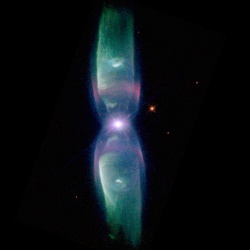
HST
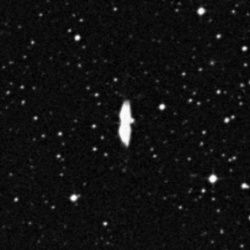
DSS r 5'x5'
small and faint appearance; CS easy and direct visible; faint and thin extensions to N and S, ~1' long
27", 837x, fst 6m5+, seeing III
already elongated object around bright CS with searching eyepiece
(113x); with high magnification both wings not uniformly conical but
bulgy with knots behind the widest position of the wings, brighter wing
and knot to the N; faint but direct visible second star some arc seconds
NW of the CS
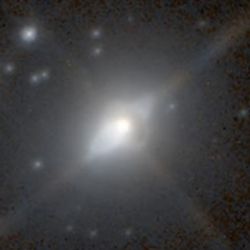
HST
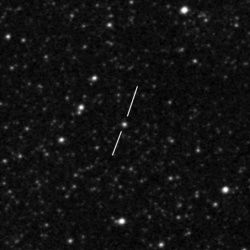
DSS r 5'x5'
object can be hold steadily with averted vision with 183x as a stellar peak; with 446x direct vision object; from 1000x up object became a little bit fuzzy around a stellar peak in the middle; even with max. magnification, a clearly elongation can not be detected
IRAS 17150-3224 "Cotton Candy Nebula"
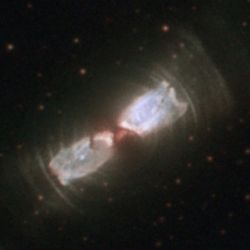
HST
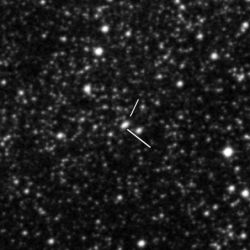
DSS r 5'x5'
bright central part already visible in the searching magnification; with higher power the central area seems to be slightly diffuse without showing the faint extensions
28", 1248x, fst 7m5+, seeing I-II
direct vision object; with high power two separated, 1:2 elongated parts;
divided with a small dark lane; both extensions similar long and bright;
a brighter knot sits directly NW over the dark lane in the NW part
Henize 3-1379 "Fried Egg Nebula"
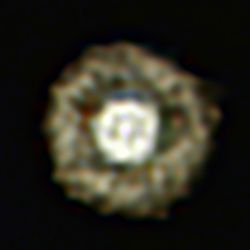
VLT
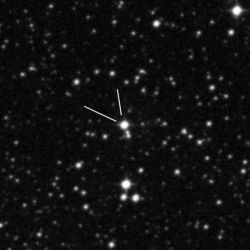
DSS r 5'x5'
28", 1560x, fst 7m5+, seeing I-II
stellar, but
direct vision object with 183x; with maximum power (1560x) object shows
two brightness areas; the middle zone is round and a little laminar;
around this central part another fainter but also round area follows,
this round glow is around double the size of the inner part; the whole
outer circle is around 2/3 the size of the north following double star
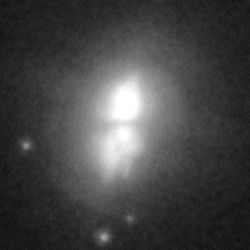
HST
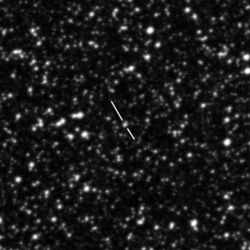
DSS r 5'x5'
with 183x direct vision object; with good but not perfect seeing elongation is suspected as 1:2 N-S; a 17.5 vmag star just 4" NW of the PPM is popping in and out of view, a delusion of the second component
28", 1560x, fst 7m5+, seeing I-II
second observation with much better seeing; 17.5 vmag star can be hold
with averted vision easily with lots of space between PPN and star;
object itself is clearly elongated as a 1:2 N-S fuzzy patch; in moments
of steady seeing the object resolved in two extremely tight stellar
peaks; the separation is very difficult to confirm and is only popping
two times of the whole observing time; two co-observer also easily see
the elongation and also suspected the separation like a very tight
double; the separation is not sure

HST

DSS ir 5'x5'
32",
611x, fst 7m5+, seeing III
nothing visible or suspected
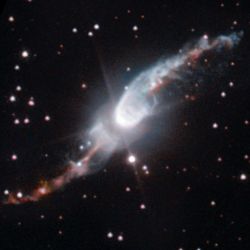
HST
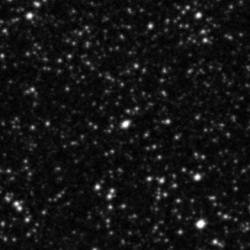
DSS r 5'x5'
bright, direct vision main body; main body itself 3:2 elongated with stellar peak at its SE edge; NE extension visible from 837x up; best view 1137x; extension thin but steadily visible with averted vision; starting from the main body first brighter part, than small but fainter part till a stellar peak at its NW end; no thin extension to the SE, but only a slightly brightening; no reaction with UHC

HST

DSS r 5'x5'
bright, direct vision main body; main body itself 3:2 elongated with stellar peak at its SE edge; NE extension visible from 837x up; best view 1137x; extension thin but steadily visible with averted vision; starting from the main body first brighter part, than small but fainter part till a stellar peak at its NW end; no thin extension to the SE, but only a slightly brightening; no reaction with UHC
IRAS 17441-2411 "Silkworm Nebula"
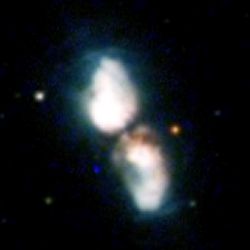
HST
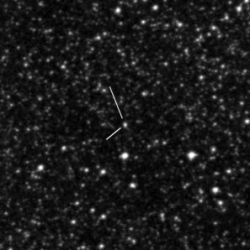
DSS r 5'x5'
extremely small nebula; under good seeing conditions the somewhat elongated nebula dissolves into two peaks; roughly N-S elongated; difficult to split
IRAS 18059-3211 "Gomez's Hamburger"
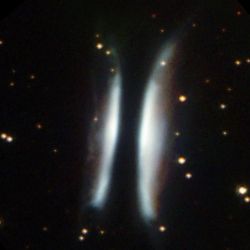
HST
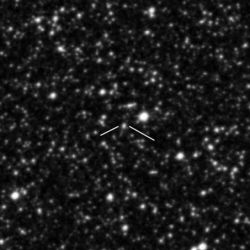
DSS r 5'x5'
under bad seeing but good transparency direct vision object and not difficult to see; diffuse appearance; no separation, no elongation
27", 837x, fst 7m0+, seeing III (latitude
47,1N)
under average seeing for the small horizon distance 2:3 N-S elongated
patch of light; separation or dark lane not visible
28", 1560x, fst 7m5+, seeing
I-II (latitude 23,2S)
direct vision 1:2 N-S elongated, diffuse smudge; dark lane visible as a
very thin, hard defined line; line not continuously visible; brighter W
part; W part seems to be slightly bend; bending difficult to define but
nebula definitely not straight
MWC 922 "Red Square Nebula"
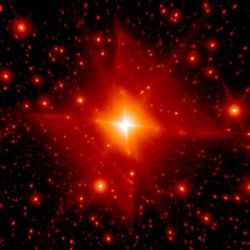
Keck II / Hale
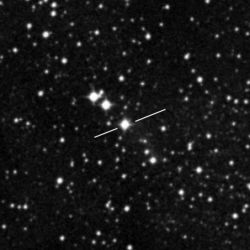
DSS r 5'x5'
the CS is already visible directly with the searching eyepiece; no blinking effect with any filter; with higher magnification the CS can not be focussed like the other neighbour stars with identically brightness; a extremely faint nebula shell could only be suspected, no sure observation and no square structure visible
OH 17.7-2.0 (V445 Sct)
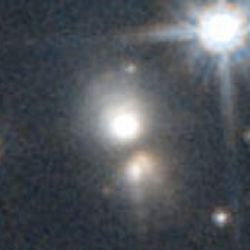
HST
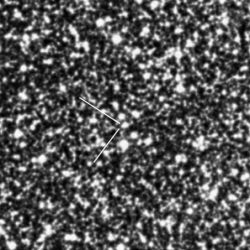
DSS r 5'x5'
the central forming dragon like star group are only visible with high to very high magnification; the PPN can be found only 3" SE of a 14vmag star; it is visible as a faint, diffuse nebula directly beside the star and looks like a tight double star at the first view; no chance to separate both knots; the whole object is visible as one, non elongated object with averted view
Preite-Martinez 2-39 "Starfish Nebula"
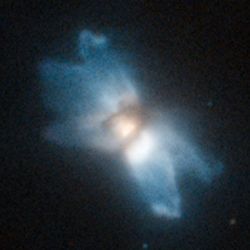
HST
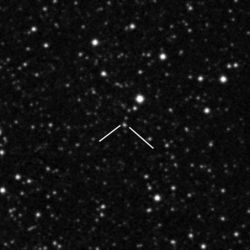
DSS b 5'x5'
with 419x stellar peak which is steadily visible with averted vision; from 837x up the stellar peak seems to be a little bit diffuse against similar bright stars; no elongation, no central peak or other details visible
Minkowski 1-92 "Footprint Nebula"
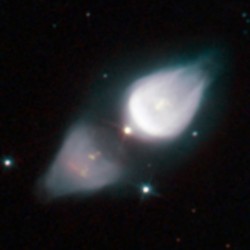
HST
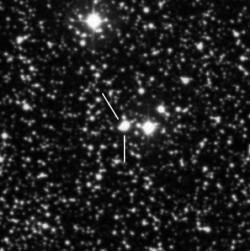
DSS b 5'x5'
separation clear but not so easy; brighter part to the NW, slightly elongated; fainter component SE smaller
18", 579x, fst 7m0+, seeing III
bright object; easy to separate; brighter and larger part to the NW
18", 512x, fst 5m5+, seeing III
even under bright background sky and soso transparency
(milky way barely visible), separation of the knots easily visible; from
300x up, the brighter knot seems to be somewhat nonstellar and diffuse;
512x brings out a bright, direct visible brighter knot with a much
fainter and smaller plob directly SE following, smaller plob faint but
steadily visible with direct vision
27", 1465x, fst 7m0+, seeing
I-II
brighter knot to the NW with good and hard defined edge to the middle,
drop shaped extension to the NW, at the end dark space between drop edges; SE part fainter and much smaller, triangle form with slightly
bend edge to the middle, brightening in the middle very difficult to see;
CS as a stellar peak directly attached to the bright rim of the NW part,
hard to separate and not steadily visible; second star S of the CS
direct visible, star to the E is popping in and out of view
IRAS 20068+4051
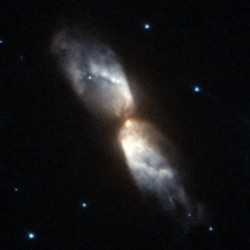
HST
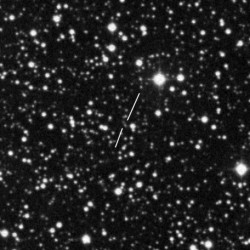
DSS b 5'x5'
object is popping in and out of view; sure detection but not steadily visible; no elongation detected
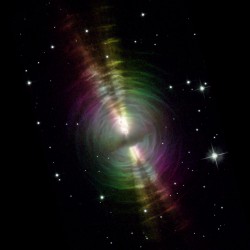
HST
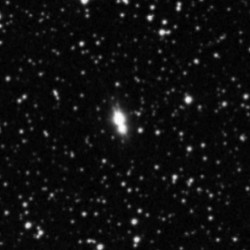
DSS b 5'x5'
two bright, easy to separate knots; brighter N knot laminar and drop shaped, faint extensions to the N with better defined W edge; S knot nearly stellar, somewhat N-S elongated, very faint extensions to the S, much shorter than the N counterpart
18", 810x, fst 7m0+, seeing II
bright main knots; extensions out of the N part brighter and wider; S
extension narrower; no conical or folk shape visible
27", 977x, fst 7m0+, seeing II
both main and bright knot itself slightly conical; extensions easy to
see and direct visible; both extensions clearly conical, both shows
folk shape with better defined edges like a "peace sign"
IRAS 22036+5306
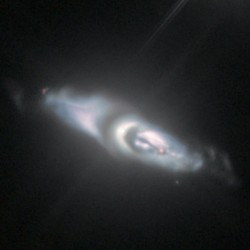
HST
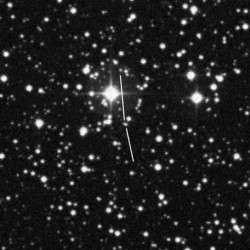
DSS b 5'x5'
steadily visible with averted vision; 1:2 elongation NE-SW; center a little bit brighter
36",
819x, fst 7m0+, seeing III
direct visible but very small object; 1:2 NE-SW elongated
CRL 3068
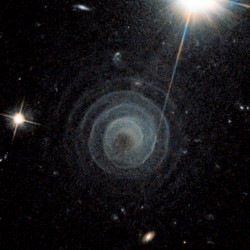
HST
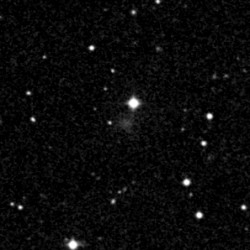
DSS b 5'x5'
once popping with 419x (EP 1,6mm) with averted vision; laminar character with 0,5' size; extremely difficult
36", 505x, fst
7m0+; seeing IV
extremely faint glow is popping in and out of view; not steadily visible;
0,5' large, diffuse; co-observer does see similar glow with similar
difficulties
